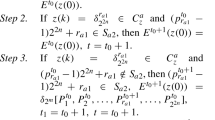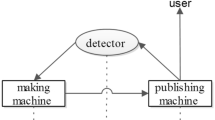Abstract
The construction and analysis of trigger circuits as asynchronous elements of sequential logic are considered. The study is performed for a generalized model based on a trigger function, which is represented in analytical form and structured so as to ensure the possibility of constructing trigger circuits with preset characteristics. On the basis of the obtained results, a classification system for asynchronous triggers is suggested and conditions for the emergence of dangerous signal competition in trigger circuits are determined.
Similar content being viewed by others
References
Joseph, J.F., Cavanaugh, Sequential Logic: Analysis and Synthesis, Boca Raton: CRC, 2007.
Davis, A. and Nowick, S.M., An Introduction to Asynchronous Circuit Design, Techn. Rep. UUCS-97-013 (Univ. Utah, Utah, 1997).
Vasyukevich, V.O., Venjunction, a Logic-Dynamical Operation: Definition, Realization, Application, Avtom. Vychisl. Tekh., 1984, no. 6, pp. 73–78.
Vasyukevich, V.O., Deciphering asynchronous sequences, Avtom. Vychisl. Tekh., 2007, no. 2, pp. 49–59.
Author information
Authors and Affiliations
Corresponding author
Additional information
Original Russian Text © V.O. Vasyukevich, 2009, published in Avtomatika i Vychislitel’naya Tekhnika, 2009, No. 4, pp. 21–29.
About this article
Cite this article
Vasyukevich, V.O. Analytics of trigger functions. Aut. Conrol Comp. Sci. 43, 184–189 (2009). https://doi.org/10.3103/S0146411609040038
Received:
Published:
Issue Date:
DOI: https://doi.org/10.3103/S0146411609040038




